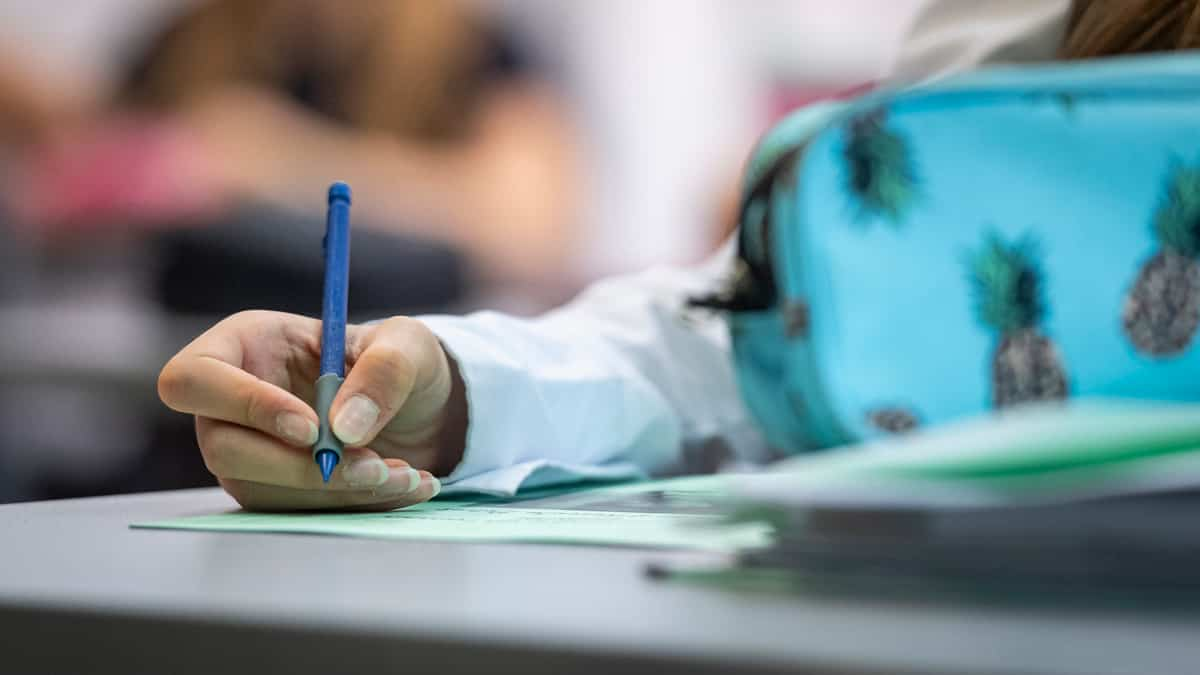Schools must ease up on the use of digital technology in the classroom: reading on screen is harmful while taking notes on the keyboard brings no benefit, concludes a report from the National Institute of Public Health of Quebec (INSPQ) unveiled Thursday.
• Read also – Screens at school: “pressure” on the shoulders of private teachers
“It is clear that we must promote and encourage paper reading and taking handwritten notes” at school, says Tania Tremblay, scientific advisor at the INSPQ.
She is the author of the very first Quebec synthesis which makes it possible to document the effects of screens on the learning of young people at school, carried out from a vast literature review which takes into account the results of more than 170 research studies. published between 2017 and 2022.
These are issues addressed from a public health perspective since academic success is associated with health and well-being in adulthood, explains M.me Tremblay.
Reading: the paper far in front of the screen
The findings relating to on-screen reading are clear: the majority of studies reveal that “digital reading leads to a reduction in text comprehension compared to paper reading”, we can read.
Several reasons can explain this phenomenon, according to Mme Tremblay. On screen, readers often tend to read “diagonally”, that is to say in a more superficial way.
Virtual reading requires “much more cognitive effort” to find one’s way in a text compared to paper, where the pages serve as fixed visual cues.
Finally, touching the pages with your fingertips also helps with learning. “Turning the pages and having tactile sensations helps memorize and encode information,” explains the scientific advisor.
No advantage to taking notes on the keyboard
Scientific data also indicates that “digital note-taking does not bring added value to learning”.
On the contrary, writing notes by hand would make it easier to retain information thanks to the hand movements used to form the letters.
Students who take notes by hand are more likely to summarize the content, rather than verbatim, which helps with learning.
In light of these two findings, schools are invited to “reconsider the use of digital devices for reading and taking notes”, in order to improve students’ literacy skills, which are the basis of success. school, we can read.
This observation, however, does not concern students who use reading and writing assistance software due to learning disabilities, M wants to point out.me Tremblay.
Multitasking: be careful, danger!
This literature review also makes it possible to tackle a “very widely held” vision in the education sector, which leads us to believe that the more young people are accustomed to working with digital devices, the more they develop their skills to work in multitasking mode, adds Mme Tremblay.
However, his review rather demonstrates that multitasking in class “harms learning”, since it affects memorization and understanding. Other studies have also shown that the more multitasking is present in class, the lower the academic results.
This summary also allows us to conclude, unsurprisingly, that cell phones are a real source of distraction in class, even when the device is placed upside down on the desk. Its mere presence disrupts students’ brains.
The Minister of Education, Bernard Drainville, has officially banned cell phones in class since 1er January.
Warning signs regarding the use of screens in class have been increasing in recent months.
In a report published this summer, UNESCO said there is “little solid data on the added value that digital technologies bring to education”, while warning of the “harmful effects” of screens in class, such as concentration problems and sources of distraction.

